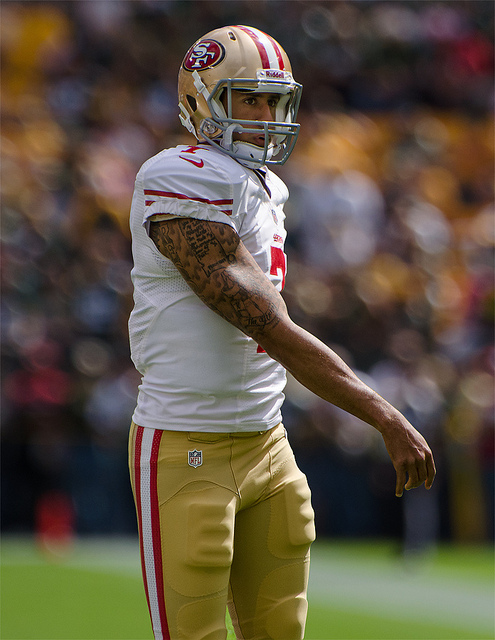
Recap: “Capitalism Meets Activism: The Case of Colin Kaepernick”
On Dec. 6, the University of St. Thomas hosted the event “Capitalism Meets Activism: The Case of Colin Kaepernick.” The event was sponsored by the Undergraduate Business Council and the Student Diversity Board. Four professors at the university, with different educational backgrounds, spoke about the new Nike ad campaign and what it meant for black culture, the marketing and advertising world, and its impact on Nike’s stock.
The event was structured in a half presentation, half panel form, meaning the speakers gave their viewpoints of the advertisement and the attendees were able to submit questions to the speakers. The overarching theme of the speakers’ presentations had to do with why this ad is so controversial compared to others, and why Kaepernick was the perfect athlete to choose as the “face” for the new Nike ad campaign.
The professors noted that the advertisement has been considered controversial because of Kaepernick’s involvement, not because of the meaning behind the advertisement itself. Many view his protest of kneeling during the national anthem to be disrespectful to veterans, but the NFL has no rule against this action. The speakers stressed the importance of this rule because it has been a large topic of discussion in regard to it being acceptable. They also mentioned that in interviews Kaepernick said that the [Black Lives Matter] issue was more than football and it was selfish to look the other way.
Along the lines of advertising and marketing, the speakers mentioned that the advertisement was successful because it followed these criteria:
- Everything has context, including your brand.
- Authenticity is crucial to connecting.
- Count the costs. Know and understand the risks.
- Don’t just be familiar with your audience, know them.
These points illustrate that in order for a brand to take a position on a social issue, it must be relevant and genuine. They stressed that the target audience will not buy into the statement if it is not fitting to the brand, or seems to be forced. Along with these criteria, brands should understand that the main goal should not be to sell a product, but to empower; if this is done, people will continue to purchase.
To conclude their statements, the professors noted that Nike’s stock has been at a high after the advertisement aired in September. At first, the stock price went down, but rose as time continued.
The presentation succeeded in providing information necessary to understand the dynamics that went into preparing the new Nike ad campaign and the effects it had after it aired.
Read more about what experts think about brands making a media relations plan here!
